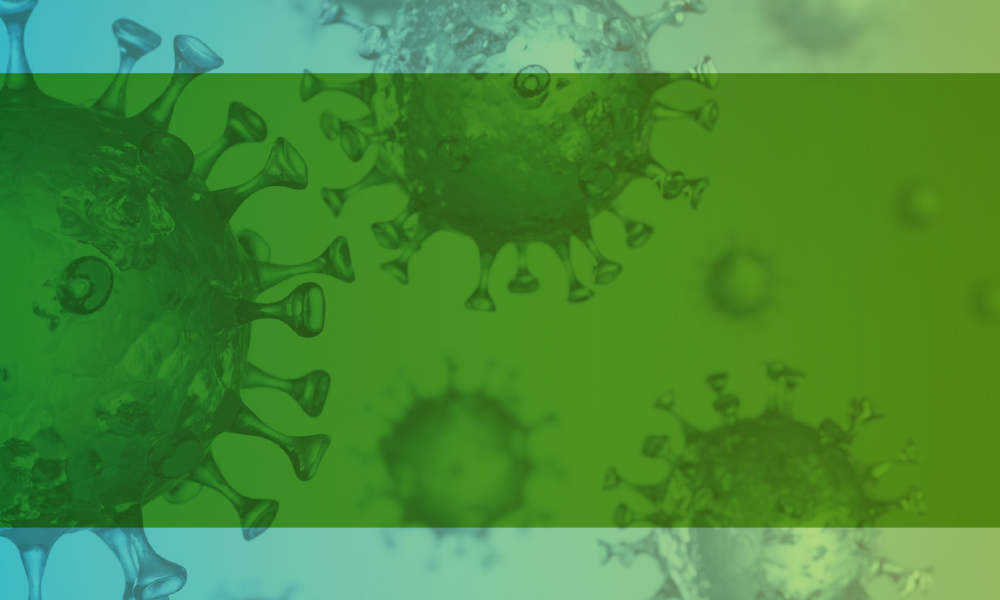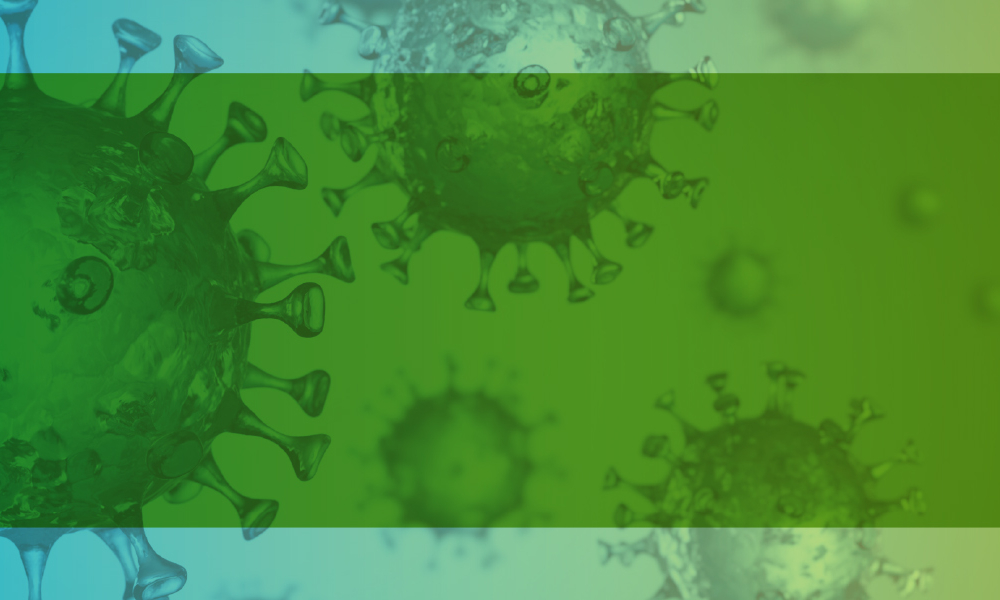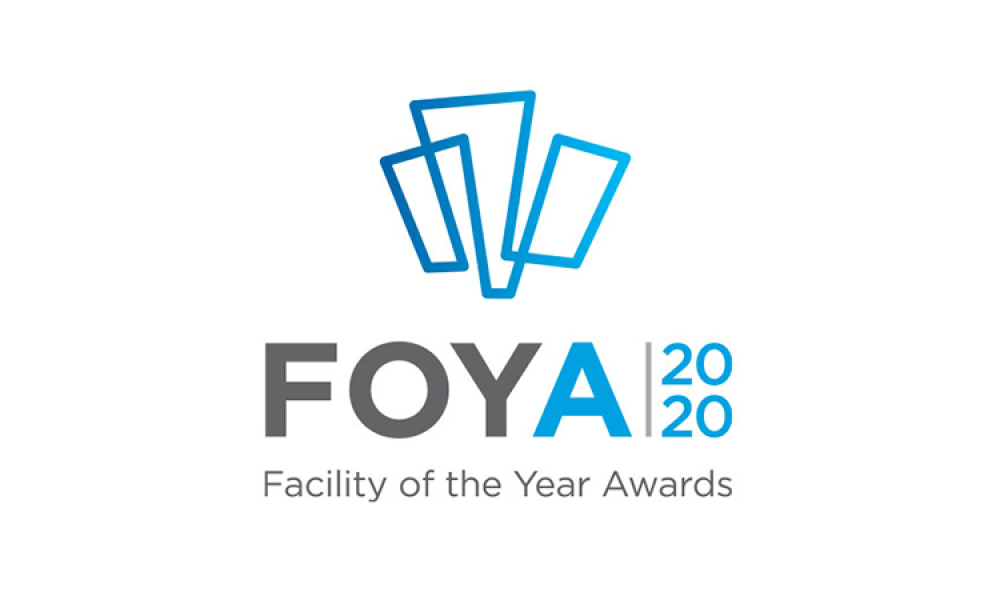Pharmaceutical Engineering® COVID-19 Impact Survey: How the Industry Is Responding

As the COVID-19 pandemic continues, pharmaceutical companies are taking steps to address the short-term consequences while also preparing for what may be the long-term effects for the world, individual nations, and the pharmaceutical industry. In late April and early May, Pharmaceutical Engineering® Magazine surveyed over 50 ISPE members who hold leadership positions within the Society about the pandemic’s impact. This article shares highlights from their feedback.
Respondents included members of the ISPE International Board of Directors, Chairs and Co-chairs of Communities of Practice, and Chairs and Co-chairs of major committees such as the Guidance Documents Committee, Regulatory Steering Council, Knowledge Network Council, and Pharmaceutical Engineering Committee. They were asked to complete an email survey about COVID-19’s impact on their organizations to date as well as thoughts about what may lie ahead for the industry. Almost 40% of those invited to participate responded. Pharmaceutical Engineering® thanks the respondents for taking time to share feedback. (Note: Some participants asked that their comments not be attributed to them by name or company.)
The survey questions were:
- How has business changed for you because of the COVID-19 pandemic?
- What are your biggest concerns coming out of COVID-19 pandemic isolation/social distancing protocols?
- What are the greatest concerns you hear about from your teams?
- What changes for the better do you see as a result of lessons learned from the pandemic?
Overview
Respondents shared views from both a personal and a leadership perspective in their organizations and the pharmaceutical industry. One clear trend from their responses is the deep commitment of the industry to helping patients worldwide. Manufacturers, equipment providers, and consultants are not only dedicated to the development of COVID-19 tests, treatments, and vaccines, but also focused on ensuring that all medications continue to be available under these most extraordinary circumstances.
Concern for team members who are working remotely and those who must remain in manufacturing and lab settings was another common theme in the respondents’ feedback. They are prioritizing communication with both remote and onsite staff and looking for ways to address the work, home, and health pressures of the pandemic on all employees.
Business Changes
Employees working remotely, postponed or canceled travel, and meetings via various technology platforms have rapidly changed how work is done by many respondents and their organizations. Although some respondents reported declines in business, others saw new opportunities and appreciated the efficiencies available from virtual operations. Many noted longer work hours for themselves and their teams, and some found that remote work in-creased focus and productivity. As respondents adjust to the new work arrangements, they are paying close attention to supply chains and strategies to meet demand for pharmaceutical products.
“The current crisis has changed how we do business, for both the good and the bad,” said Vivianne Arencibia, President, Arencibia Quality and Compliance Associates, Inc. Starting with the positive, she noted, “The crisis has opened new avenues, businesses opportunities not traditionally thought possible or at least preferred. Working from home was always part of the model, but business from home is entirely different. Meetings, discussions, and learning opportunities are virtual but no less effective. I am in contact more often with associates and colleagues than previously.”
Arencibia also pointed out some of the negative effects: Although expenses have fallen, short-term business changes and a decrease in onsite activities have impacted the bottom line. Additionally, workdays are longer, and lines between work and home have been blurred. And, although virtual communication is effective, it takes effort. “Relationships have changed, conversations need to be planned.”
Remote work has been a welcome way to keep business moving, with some organizations swiftly adopting remote work and others making a slower transition. One respondent noted an IT upgrade in their organization made the move to virtual operations much easier, with remote meetings and sharing and collaborating on documents. Another respondent said that their organization has made this adjustment even though “we did not have a playbook for this type of event (no one did). We learned to focus on critical items only at this point.”
The pandemic has accelerated the move to remote work for some organizations that previously had just started with it. Nik Krpan, President, Cheme Engineering, Inc., said, “As an engineering service provider, we are almost all working from home, something we were taking baby steps toward for a while and now have taken a huge leap.”
Frances Zipp, President/CEO, Lachman Consultant Services, Inc., said the “focus on working remotely to support clients has been the main change. However, the transition has been seamless and has availed many novel opportunities within the industry.”
Despite reprioritizing activities, which can slow some work, communications may be enhanced by the current situation. Keith Beattie, Director, EECO2 observed, “It is easier to reach people to speak with, as many are working from home and not in meetings. They are also thinking about the future and planning for work post-COVID.”
Other business impacts reported by survey participants include halted site installations; delays in contracts for new work; canceled audits or virtual/remote testing to replace in-person physical audits; use of remote testing to allow factory acceptance tests to continue uninterrupted; supply chain adjustments, including shipping changes, to ensure availability of products; and stepped-up emphasis on risk management.
One respondent reported that a focus on employee safety, well-being, and livelihood is most essential at their company. This includes an extra bonus to essential employees, rerouting traffic into plants for temperature checks, and asking questions about health recommended by the Centers for Disease Control and Prevention (CDC) and the World Health Organization (WHO).
Steps underway at another respondent’s organization ranged from the strategic (business continuity in global regions hardest hit by the pandemic to continue essential work while keeping employees safe) to the practical (manufacturing hand sanitizer for donation to hospitals and the company’s employees).
Though all industry members are committed to patient safety and ensuring that needed medications remain available, those who have been working on COVID-19 products and solutions have demonstrated exceptional commitment. Lou Kennedy, CEO, Nephron Pharmaceuticals Corp., noted, “Our company has been on the frontlines of the response to the pandemic. We are proud manufacturers of respiratory solutions that treat symptoms associated with COVID-19, and we also produce sterile injectable drugs used to sedate and wake patients on ventilators. This dynamic has given our entire team an even stronger sense of purpose.”
Sartorius Stedim Biotech’s manufacturing sites have remained fully operational, said Katell Mignot-Moraux, Subject Matter Expert on Single-Use Technology at Sartorius. The company implemented a risk mitigation plan in early March to address the pandemic’s impact on supply chain and logistics; identify and resolve bottlenecks with increased stock levels and raw material safety stocks; maintain production capacities; and establish safety measures for employees’ well-being, she explained. Many of the company’s products are being used for treatment or vaccine development initiatives, so the company is supporting this work by prioritizing the needs via a COVID-19 task force. “Surprisingly, digital communication with our clients, many of them also being in lockdown, has strengthened the relationship,” she noted. Weekly communications to clients and from the board and human resources to all employees have been additional steps.
Another respondent commented on the meaning of the term “essential” in the pharma industry under the current circumstances. “We are not a pharma company, but our equipment supports pharmaceutical companies. So, we both have both clearly essential roles.”
Regulatory changes and other far-reaching changes have been notable, said Roger Nosal, Vice President and Head, Global CMC, for Pfizer Global Product Development–Global Regulatory Affairs. “There have been adjustments in regulatory approaches and expectations. Many of the regulatory accommodations are intended to expedite development and approval of products to prevent the spread or reduce the symptoms and secondary effects of COVID-19. Regulatory authorities have also adjusted regulatory processes intended to reduce potential for drug shortages for essential medicines for other therapeutic priorities.” He said that the industry has leveraged regulatory opportunities and accelerated development for treatment and vaccines for COVID-19 and for supply chain continuity of medicines.
“In addition, many companies have embraced the opportunity to develop and work in collaboration to understand the science that causes the virus to infect and spread among individuals,” Nosal said. To meet increased demand for some medications in the wake of COVID-19, “the industry has responded by working with regulatory authorities to enhance and increase production. Consequently, the industry has absorbed the increased demand on capacity to maintain business continuity, and that has significantly increased individual work schedules, effort, and time. In general, the pharmaceutical industry has demonstrated an unwavering commitment to patients during this period.”
In her assessment of how the industry has been affected by COVID-19, Avril Vermunt, Strategic Technology Partnership Leader at Cytiva (formerly GE Healthcare Life Science), pointed out a clear change in interactions and relationships. “I heard someone say, ‘During this [pandemic] you cannot overdo communication,’ and I tend to agree with this. I think it is the same for emotional intelligence, too—you cannot extend too much grace during this time. All in all, I think everyone is doing an amazing job making the most of technology to maintain connection, even building relationships, and keeping our industry moving along.”
Isolation/Social Distancing Effects
The pressures of isolating and social distancing—as well as how to slowly emerge from these restrictions in different locales—were issues of concern cited by many survey respondents for their own organizations, the industry, and the world. Long-range changes may well include a permanent element of remote operations, according to predictions by multiple respondents. Participants also expressed fears that reopening economies too swiftly could lead to resurgence in infections.
“The fears I have are that we may not be ready to accept the change that managing through this crisis will entail,” Arencibia said. “The discussions tend to center around getting back to normal [but need to be] thinking through what the new normal needs to be. For example, will we or should we as a society engage in large events, concerts, classes, etc.? I am not sure the implications are fully understood.”
Kennedy agreed that complacency in addressing the risks from coronavirus could impact both health outcomes and the economy. “We can’t afford to relax social distancing efforts prematurely because that risks reversing the progress we have made in the fight against the virus,” she said. “For our company specifically, we must remember to follow all CDC guidelines regarding COVID-19 from the executive offices to our cleanrooms. In addition to social distancing, we must also keep in mind that COVID-19 testing is imperative to get this country back to work.”
Other observations included the ongoing need to maintain communications; understand that the return to office work will be a gradual process; re-coup lost or delayed business opportunities; continue focus on supply chain maintenance; and deal with uncertainties about travel and face-to-face meeting resumption.
Several respondents expanded on the need to keep focus on employees’ well-being. Krpan said the mental health of his staff, especially those who live alone, and the well-being of those at higher risk for COVID-19 infection, are top of mind. Gunter Baumgartner, Senior Vice President, Head of Global Engineering at Takeda Pharmaceuticals, said regular meetings with team members are key, as is considering that return to offices will be different with physical distancing; he predicted that fully occupied offices will not be seen for a year.
Christian Wölbeling, Senior Director Global Accounts, Werum IT Solutions, agreed that attention to employee well-being must continue. “Virtual ‘coffee corners’ are one instrument with which we are fighting social isolation. Accepting the flexibility of the working day is a nice side effect, as IT and programming services can be done at any time of the day, except when you have to synchronize with other organizations.” Flexibility also helps those with families to manage their time, he added.
Nosal focused on future risks, such as “the potential for the etiology of COVID-19 to change or mutate at a rate [that] may exceed the industry’s ability to sustainably and effectively prevent or treat manifestations of the virus and secondary infections.” He continued, “While several pharmaceutical companies have expeditiously introduced preliminary and putative tests for the COVID-19 virus, improving analytical accuracy and precision as well as access to simple, rapid, and direct assessment should be a priority.”
Nosal also expressed concern that some legislative initiatives appear to be “politically motivated and protectionist rather than grounded in scientific and technical necessity.” He stressed that science should drive both the development of new medicines and the sustainability of “medicines with consistent quality and well-demonstrated quality assurance globally.”
Jeff Odum, Global Lead, Design, Technology, and Standards for Sanofi Biologics, voiced a related concern: “That people will forgo ‘common sense’ and will continue to place restrictions on organizations due to overreaction to false or biased data and information.”
Vermunt pointed out the importance of timely information that is shared. “On a humanitarian level, the big question is what does the pandemic look like months from now, and how effective are our monitoring, response, and control measures, especially with differences region by region,” she said. “At a macroeconomic level, the question is what does our industry recovery look like.” This question is a top priority for the industry, and she not-ed that timely sharing of ideas and information is being seen. With respect to business, she believes future office hours, travel, and production will look different. “So having the most up-to-date information is key to devising strategies to address what we can control within our organizations.” Finally, she noted, “At the individual level, these strategies also have to account for staff health, well-being, and productivity. This industry has good insight into safety related to infectious disease, and the decisions I have seen take personnel safety in the highest regard. That will continue, and hopefully we can set an example for other industries.”
Keeping an eye on the positive opportunities is important as well. “Changes in our industry’s supply chain have already begun, and the distancing protocols put in place to support manufacturing during these isolation times may lead to a new way of working,” said Zipp. “This is a great opportunity for our industry, and we can never return to pre-COVID-19 times.”
Mignot-Moraux noted her company has needed some adaptations in manufacturing sites to allow for social distancing while maintaining production capacity. “Overall production capacity remains intact and spare capacity is available. Sufficient personnel are in place and necessary actions are taken to limit the infection risk for our operational staff. In addition, we are in the process of hiring additional personnel to further increase production capacity for critical items,” she said.
Team Concerns
Respondents shared the concerns that their teams have expressed to them. Not surprisingly, these concerns often echoed those of the industry leaders who answered the survey: the uncertain future of the pharma business, potential risks as restrictions on social distancing are reduced, how to balance work and family while remote work continues, coping with greater workloads, and lack of social interaction.
“It’s really mixed how people are personally taking this situation,” one respondent said. “For many, it’s business as usual, but for others it is extremely stressful.” Krpan noted that concerns may vary by demographics: Younger staff are more concerned about financial impact, whereas older staff are more focused on health.
Burnout and stress management are emerging as significant concerns, Nosal said. “Most of my colleagues and teams are working longer hours and weekends, balancing familial and social demands while simultaneously navigating increasingly complex issues and uncertainties. This pandemic and the industry response to it have had a significant impact on planning and prioritization, particularly for life-cycle management of products.” Companies have taken some measures to balance immediate versus long-term priorities, he said.
Another respondent described specific steps to provide support for team members under the stresses of the pandemic, including keeping employees safe; communicating often and listening; providing well-being assistance; supporting work from home with ergonomic aids, activities, and conferencing tools; being patient with remote workers juggling work responsibilities alongside homeschooling and other family needs; and understanding that everyone will have both good and bad days.
The issue of mobilizing an “immobile” workforce deserves attention, Vermunt said. “Now people are dealing with different aspects of disruption and managing it differently and on different time frames. Most people in our industry want to help and are looking for opportunities to work with like-minded people. Be open to letting teams work in different ways and with different partners. Lean on the principles of trust, even in virtual settings, be you, be honest, and follow through.”
Most people in our industry want to help and are looking for opportunities to work with like-minded people. Be open to letting teams work in different ways and with different partners.
Team members are also wondering about how the industry will meet changing needs in the market, particularly around the supply chain. For example, Zipp reported, “My teams have expressed some concern about availability of product for the US market and potential gaps in the ability to manufacture to meet the demands.”
“The biggest concern I hear—not just from our team, but from people across the country—is about the way this pandemic exposed the country’s dependence on foreign sources of API [active pharmaceutical ingredients] and PPE [personal protective equipment],” Kennedy said. Making sure that these are manufactured locally is an important consideration, she said.
Survey participants indicated that their teams did not expect to experience job losses that have affected other business sectors. “As we are working in the pharma industry, people are not concerned for their jobs, even though some parts of projects have slowed down,” one respondent said. “We seem to have a healthy and strong growing pipeline of new projects coming in. But there are growing concerns about unemployment for family and friends.” This is a stressor in addition to not being able to see family and friends in person because of isolating and social distancing.
The risk of coronavirus exposure and infection is a serious concern, particularly for team members working in manufacturing settings and those who travel for work under ordinary circumstances and may be traveling again soon. As Ferdinando Aspesi, Senior Partner, Bridge Associates International, LLC, noted, “In the manufacturing area and critical jobs, if somebody becomes infected, it might create a full shutdown of the manufacturing line or of product testing and release.” Proper testing of personnel “is paramount” for employees in manufacturing plants, he added. Several other respondents stated that team members who used to travel for business are leery about resuming travel while the virus is still active in many areas of the world.
What will the pharmaceutical industry look like in the months and years ahead? The future of COVID-19 will affect the answer. “While there have been positives, the positives are not enough to outweigh the losses should the virus not get under control,” Arencibia said.
For more information on COVID-19
ISPE provides information and resources about COVID-19 for the pharmaceutical industry.
Lessons Learned and the Road Ahead
The challenges of COVID-19 are providing opportunities for the industry to learn, adapt, and be better prepared for the future. Respondents noted changes happening now that will be helpful for the industry in the long term, including embracing the opportunities presented by remote work such as greater efficiencies and focus. Other changes that may have a long-term impact on the industry include more planning to address risk and supply chain issues, less demand for travel due to efficiencies and technology, increased focus on effectiveness in meetings, greater work flexibility, better and more efficient manufacturing and supply chain processes, environmental gains from less commuting and less pollution, new opportunities for remote audits, and more opportunities for the workforce of the future because more remote work can make hiring in varied locales a viable option.
The industry has shown how adaptable it can be when necessary. “We all were forced basically overnight to think and work differently, and innovation and creativity resulted,” Zipp said. “Additionally, the importance of personal connections and compassion has been highlighted.”
The focus on supply chain issues could bring industry improvements for years to come. “Organizations now see the value in supply chain control and maintaining continuity in both operations and logistics,” Odum said. “The industry has had an awakening in terms of ‘disaster response’ that will bode well moving forward.”
Enhanced collaboration with regulators and among the pharma industry and other companies from the development of treatments and vaccines to helping produce supplies for testing and PPE is a short-term trend that several respondents hope will be a long-term change. Nosal noted that increased transparency and improved collaboration among companies and regulators offers “the possibility of improving global convergence on risk-based, scientifically justifiable standards and consistent regulatory expectations,” which could become “a ‘new normal.’”
“I believe we have an obligation to collectively assess and learn from this pandemic and its impact on our capacity, capabilities, collaborative boundaries and opportunities, development paradigms, regulatory expectations, and risks,” Nosal said. He pointed to a recent statement from the International Coalition of Medicines Regulatory Authorities (ICMRA)1 as offering a “compelling” acknowledgment and endorsement of collaboration. “Patients are much better served when the pharmaceutical industry is able to collaborate and the regulatory authorities are aligned on harmonized approaches, expectations, and standard criteria for product approval,” he added.
Partnership is a word that may increasingly be in the industry’s vocabulary to help solve the present challenges as well as future ones. “Companies looking to strategic partnerships means that when a therapeutic or vaccine is identified, it has the highest likelihood of being manufactured, entered into clinical studies, prepared for regulatory review, and distributed globally successfully,” Vermunt said. “Next, we’re seeing capacity of manufacturing being addressed through our strong CDMO [contract development and manufacturing organization] networks. Finally, funding, discovery, and development are coming through a number of academic, government, philanthropic, and industry consortia.”
When Vermunt spoke about Moderna, Inc., the 2019 FOYA Facility of the Future category winner, 2at the 2019 ISPE Annual Meeting & Expo, she said the company “recognized patients needed not one weapon, but an arsenal against complex disease.” In her survey response, she noted that this perspective is akin to the pharma industry’s approach today. “What we’re seeing is organizations deploying an arsenal against this pandemic based on their strengths. I’m not sure we go back to addressing modern treatment in the previous way after this.”




